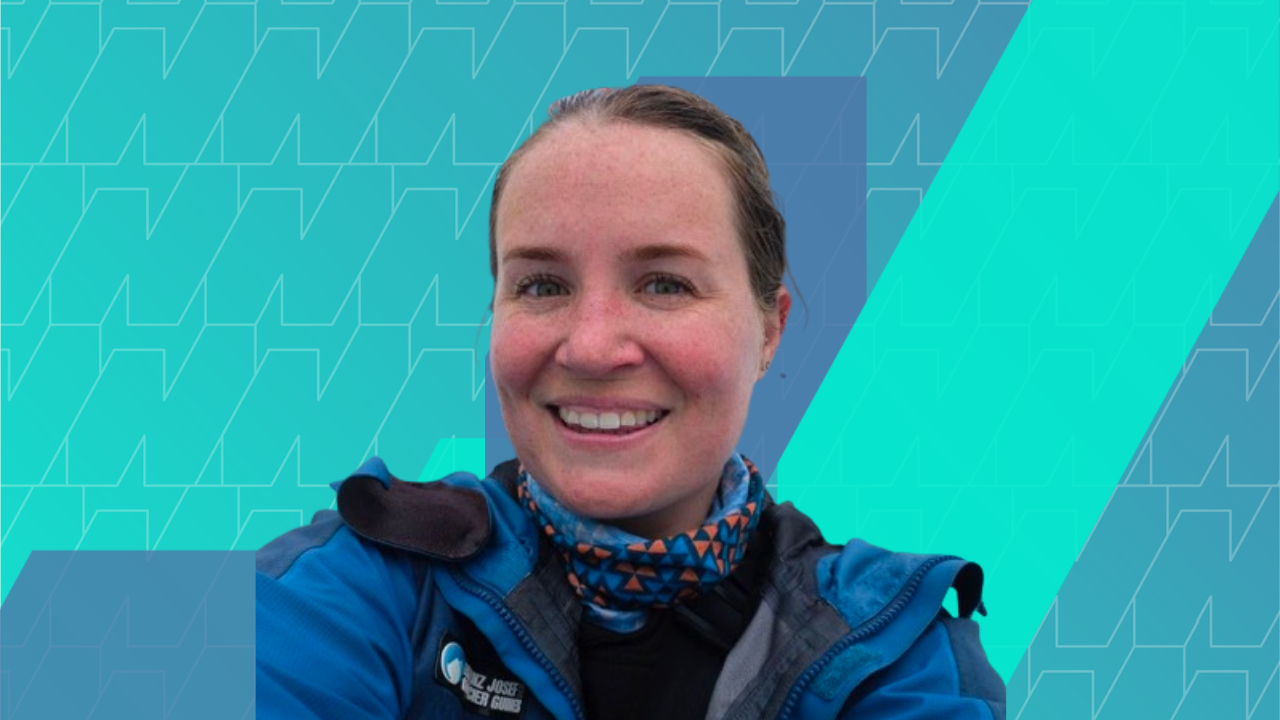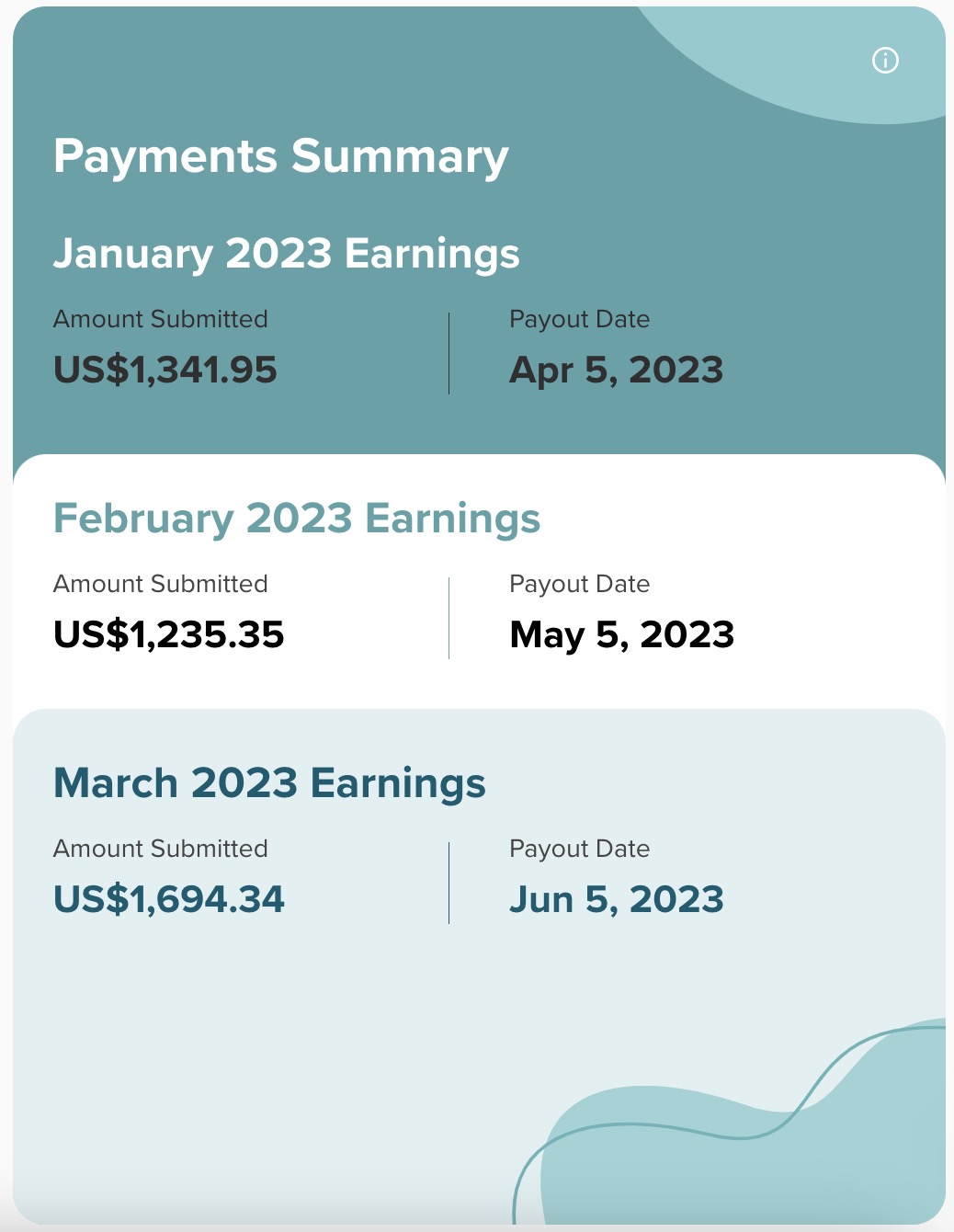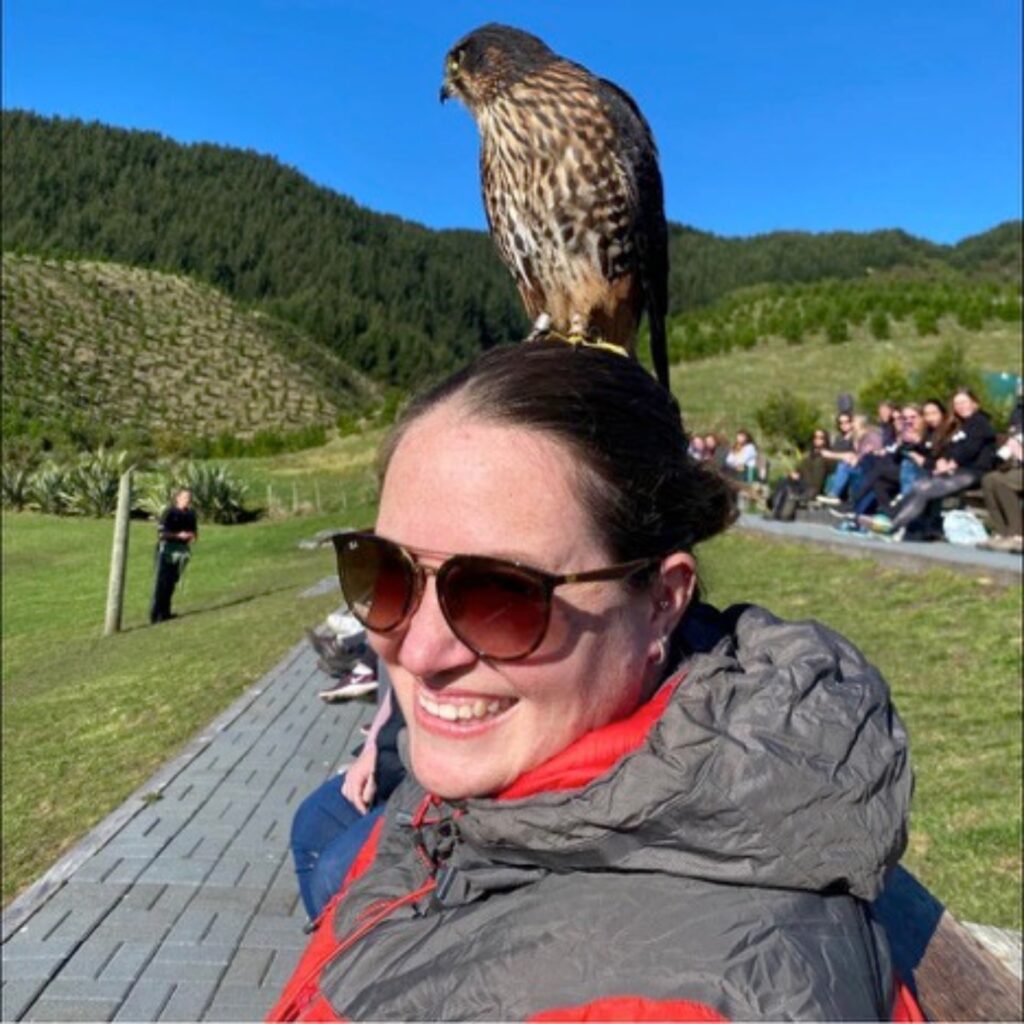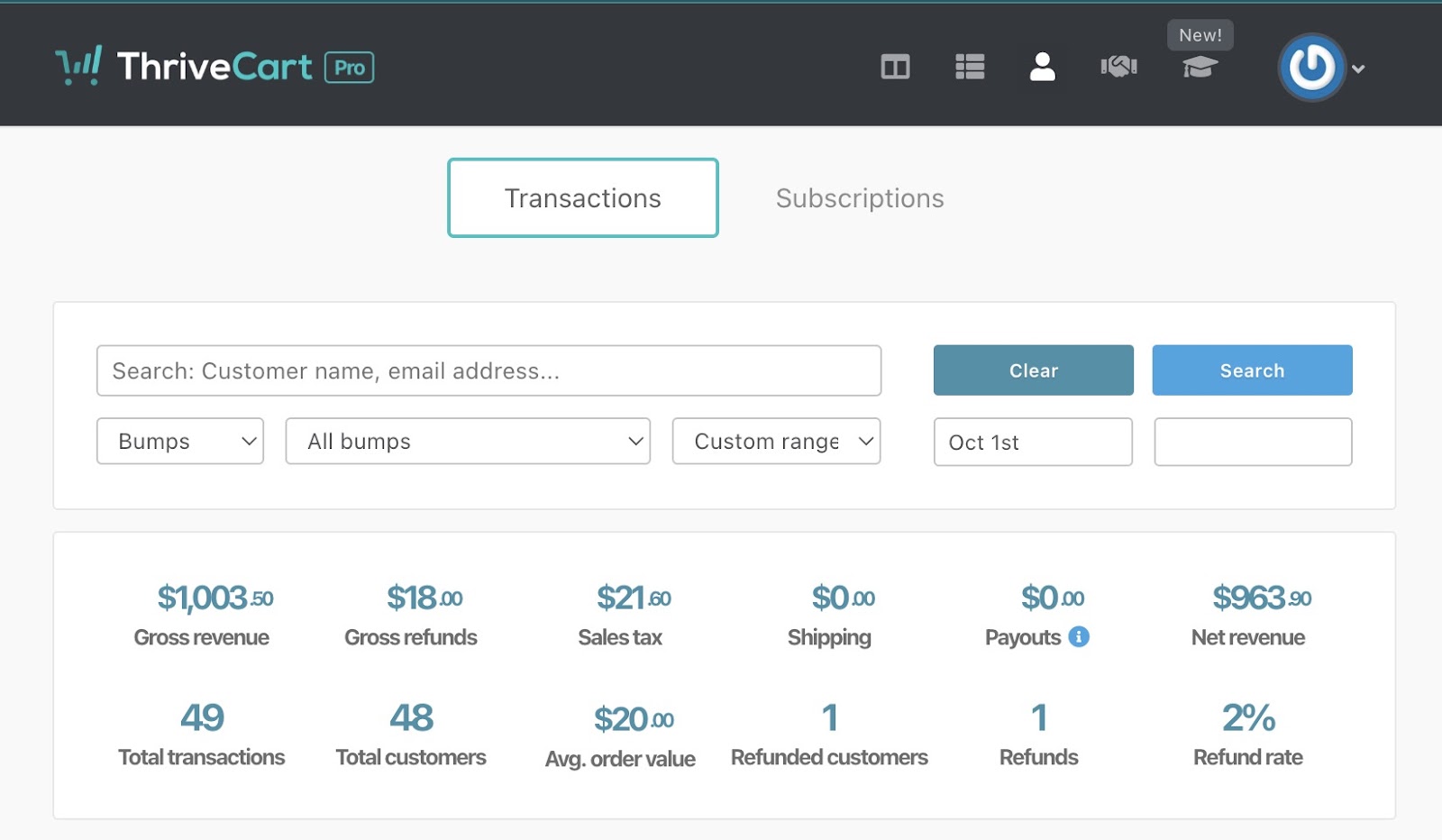AFFILIATE MARKETING
How This 38-Year-Old Made $100k Profit in 2022 From Her Travel Blogs & Facebook Groups

Sarah Chant worked as a teacher for over a decade while she poured her heart and soul into various side hustles. The bad news is that, for several years, none of them worked out. The good news is that, during that period, Sarah learned the skills she needed to finally find success.
Today she runs her main travel website, New Zealand Travel Tips, and its accompanying Facebook group, as well as other smaller travel blogs and groups. Ultimately, she’s been able to create a community-minded business that provides her with financial freedom. Between her sites, ebook sales, and itinerary support for travelers, she made $100k in profit last year. And now, with Covid restrictions behind her, the sky’s the limit!
Keep reading to find out:
- Which side hustle laid the foundation for her future success
- Why she created New Zealand Travel Tips
- How she kept busy during Covid
- How long it took her to get into Mediavine
- Where her income comes from
- How much time she spends on her business
- Her main marketing strategy
- Her approach to keyword research
- How she creates content
- Her favorite resources and tools
- Her biggest challenge
- Her greatest accomplishment
- Her main mistake
- The advice she would offer other entrepreneurs
Meet Sarah Chant
Kia ora, I’m Sarah, founder of New Zealand Travel Tips. I’m 38 years old and live in Auckland (the largest city in Aotearoa, New Zealand) with my husband and our two much-loved cats.
I’m a total adrenaline junkie, as I’ve done 7 skydives and15 bungee jumps. I’ve also traveled to 75 countries.

I’ve blogged and worked as a content creator for the past 10 years, but always alongside a full-time job. I spent 14 years teaching full-time and have worked for the last year as a digital content specialist.
In the last year or so, though, I’ve seen the light at the end of the side hustle tunnel!
Why She Created New Zealand Travel Tips
Before starting New Zealand Travel Tips (NZTT), I had a few other side hustles.
Initially, I taught myself to face paint, and in doing so, I created a small face-painting business. I built myself a basic website and started learning about SEO, social media marketing, and the benefits of blogging.
From there, I helped a few friends build their own websites and went on to create my first travel blog, Exploring Kiwis. These were the days when Instagram growth came easy, and global travel blogs were all the rage; the idea of niching down simply wasn’t on my radar.
Through Exploring Kiwis, I really focused on SEO (but with a general blog, struggled to make as much progress as I would have liked) and connected with other travel bloggers.
Though we enjoyed countless hosted stays and experiences and learned a lot, we barely made a cent. The learning, however, was immense, and though I didn’t know it at the time, I was laying the groundwork for future success.
Though I wasn’t ready to create a new niche site, I decided the time might be right to create a region-specific Facebook group.
At the time, the only substantial New Zealand Facebook groups out there were run by overseas admins (some, I’m sure hadn’t ever been to NZ!) and I thought there was a gap in the market and decided to go for it!
I got to work creating the New Zealand Travel Tips Facebook group and another group, Exploring Auckland.
Along Came Covid
Then Covid hit and New Zealand shut down. I’d heard about the benefits of niche sites and decided it was the perfect time to give one a go. I put Exploring Kiwis into hibernation and set about creating a new website for Exploring Auckland.
Within four months, I got the Exploring Auckland website onto Mediavine—something I never achieved with my original travel blog, even after years of hard work. I did this by leveraging “newsworthy articles” and sharing them with local Facebook groups. My city-specific blog allowed me to write about things that would have felt out-of-place on a travel blog (like this article about a plant giveaway), and growth came much easier.
Not long after, I took a leap of faith and committed to bringing a New Zealand Travel Tips blog to life, and it paid off—we got it on Mediavine within three months. This site is now just over a year old and we’re really happy with its traffic.



After the success of NZTT, we also created an Australia Travel Tips and South Pacific Travel Tips group to support our members traveling outside of NZ.
Niching down with NZTT was the best blogging decision I’ve ever made. I am so passionate about helping others make the most of their time in Aotearoa, and our website and Facebook group work together to do exactly that!
Between our site and Facebook group, we work hard to bring our readers and members the most reliable, tried-and-tested information, to provide local knowledge, a friendly community, and discounts to make their travels more affordable.
How Much Money Sarah’s Making
We have worked hard to diversify our income streams.
We earn income through display ads (via Mediavine) and affiliates (though OTAs and by working directly with local operators). We also offer one-on-one travel consultations over Zoom (where we help our members with itinerary planning) and recently published a series of ebooks.

It’s hard to say with certainty what our financial future will look like, as borders to New Zealand reopened less than a year ago so, though our business is 3.5 years in, in a lot of ways we’re still finding our feet.
However, we’re excited to say that in the last financial year, we made over $100,000 in profit doing what we love!
We’re always looking for new ways to serve our community while also bringing in an income. This year, for example, we made $6,000 selling our ebooks in the first four months of 2023. This was an income source that we didn’t have last year, and we know they genuinely solve a pain point for people planning travels in New Zealand.
That’s a win-win.
I spend approximately 40 hours a week working on NZTT, but could easily wind this back if required.
Right now, I’m committed to our growth and like to be hands-on in our Facebook community, so I choose to put in fairly big hours on top of my day job.
We are frequently told that our engagement and support as admins is one of the things that sets our group apart, so we’re keen to continue with this as a priority.
Her Marketing Strategies
I think Facebook groups are a massively under-utilized resource!
Our Facebook group has 50,000 members, all of whom are genuinely interested in the content of our website and our products
We’re able to survey our members to find out what their content needs are, keep an eye out for frequently asked questions, crowdsource information, quotes, and images, and can share our content back to them.
We also build brand awareness through our group and establish ourselves as experts in our field.
Plus, when someone comes through the website as a reader, we invite them to join our group to get more personalized information and to have their questions answered.
Sarah’s Thoughts on SEO
SEO is a key part of our business. Before we write anything, we’ll jump into KeySearch to research keywords and consider our priorities.
With that said, however, we still write articles that have very little search traffic. We know these articles help our Facebook community/readers and they help ensure our website is seen as a one-stop-shop.
Keyword Research
I keep a Google Sheet that outlines a range of keyword-researched topics (taken from Keysearch). We record the search volume and difficulty and look at the balance of those, along with the interest/knowledge of each writer before deciding what posts to write.
We’re also mindful of time-bound content and try to publish these seasonal articles at the most appropriate time.
Link Building
Link building is an important part of our strategy, though we don’t spend the time on it we should.
We contribute to collaborative posts, occasionally write guest posts, and make the most of opportunities like this. We’ll also happily link to our blogging buddies when there’s an organic opportunity and appreciate that many others do the same for us
Sarah’s Content Creation Process
We have a small team of writers that contribute posts and a wonderful VA that helps behind the scenes. They all play a massive role in freeing me up to edit and publish articles. We found our writers through blogging groups on Facebook.
Initially, we were focused on creating a “things to do” guide for each of the main towns and cities in New Zealand. Now, we’re working our way through smaller towns in New Zealand and creating road trip itineraries, etc.

As a relatively new site, our focus is on ensuring we have good coverage for our readers, so they can feel confident that by coming to us, they’ll be able to find the information they need, even on more obscure topics.
Of course, we then spend time building our internal links between these posts and pages.
Her Email List
For a long time, I collected emails from new members joining our Facebook group, but I didn’t have time to do anything with them.
I recently set up an onboarding series, so I send out 5 emails in quick succession, designed to introduce new members to our key offers. They then get a weekly newsletter that refers back to information found on our site.
We give new members the option to sign up for these emails when they join our Facebook groups and also collect emails through our website using a pop-up and spotlight box, both through Mediavine.
Her Favorite Resources
As a big fan of Facebook groups, it probably isn’t surprising to learn that we get a lot of our information through Facebook!
I love Digital Nomad Wannabe and Facebook Group Admins: Growth, Engagement, and Monetization.
More and more, I find myself listening to blogging podcasts too.
Her Top Tools
My go-to tools are as follows:
GroupLeads: When we first started our Facebook groups, we used to manually copy/paste email signups but GroupLeads automates that for us. We signed up for a lifetime license and love it!
Keysearch: When I first started blogging, I wrote about what interested me and what I thought others might like to read, but I was just guessing. Keysearch allows me to make informed decisions about our content, and it’s surprisingly affordable.
ThriveCart: We added ThriveCart to our toolkit when we decided to sell ebooks. The lifetime deal is a reasonable investment but we’ve already made our money back (in four months) thanks to the bump offers it lets us run.

ThirstyAffiliates: We use the free version of this tool and wouldn’t be without it now. If a product is no longer available through one OTA, we can switch out the link (from Klook to GetYourGuide, for example) and ThirstyAffiliates will push that change out right across our site. It’s a big time-saver.
Sarah’s Biggest Challenge
Finding what worked well for us was definitely the biggest challenge. I spent years blogging, never seeing a return that reflected what I was putting into my business.
When I found my secret sauce though, that all changed.
Her Most Important Accomplishment
Leading such an authentic, compassionate, genuinely helpful Facebook group is undoubtedly my most important accomplishment.
Many of our members even choose to stay in the group after they’ve finished their travels, paying it forward to new visitors.
I also love that I get to be involved in helping people plan bucket list adventures in Aotearoa New Zealand and that I’ve gotten to know so many amazing tourism operators across the country.
What She Wishes She Knew When She Started
You can’t be an expert in everything, nor do you have to do everything, and that’s totally fine.
I haven’t explored web stories, haven’t used Pinterest in years, and barely touch Instagram.
Instead, I focus on my Facebook group and website (particularly SEO) and do what I can with ebooks and email marketing.
Sarah’s Main Mistake
I’ve done things in the past that I wouldn’t encourage others to do and that I wouldn’t do again, but I’m not sure I’d call them mistakes as it took finding out what didn’t work for me to figure out what did.
In the early days, I spent far too much time growing my Instagram account. Though I had 50,000 followers, they were from all around the world, so the chances of them being interested in the particular place we were traveling to was slim. Our account was not effectively monetized and drove no traffic to our blog. And the time spent on our Facebook page really wasn’t much better.
Also, if I had my time again, I would have niched down far sooner as it was when we did that that we started to find success.
Her Advice for Other Entrepreneurs
Work hard to build a brand and community built on trust and empathy, that reflects your values.
We’re very fortunate to have a group of dedicated members that are our biggest cheerleaders. They support us and actively contribute, helping to reinforce the tone that our group is so well-known for.
It’s easy to get caught up in the numbers, but ultimately if you have a community that is highly regarded, opportunities will flow.
And if you’re currently working on something that just isn’t growing as it should (like my original travel blog), don’t be afraid to pivot to something new or leave an old business behind.
It took me going from a website about face painting to two different travel websites before I eventually made it to NZTT, and if I’d gotten stuck on any one of them, I wouldn’t be where I am today.
















